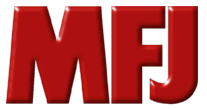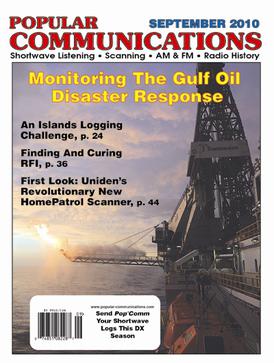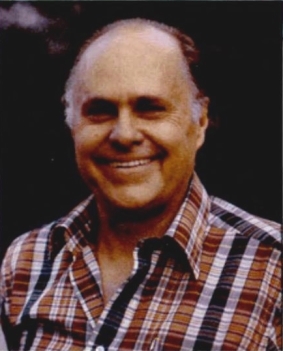In amateur radio and computing, a boat anchor or boatanchor is something obsolete, useless, and cumbersome – so-called because metaphorically its only productive use is to be thrown into the water as a boat mooring. Terms such as brick, doorstop, and paperweight are similar.
The American Radio Relay League (ARRL) is the largest membership association of amateur radio enthusiasts in the United States. ARRL is a non-profit organization, and was co-founded on April 6, 1914, by Hiram Percy Maxim and Clarence D. Tuska of Hartford, Connecticut. The ARRL represents the interests of amateur radio operators before federal regulatory bodies, provides technical advice and assistance to amateur radio enthusiasts, supports a number of educational programs and sponsors emergency communications service throughout the country. The ARRL has approximately 161,000 members. In addition to members in the US, the organization claims over 7,000 members in other countries. The ARRL publishes many books and a monthly membership journal called QST.
CQ is a station code used by wireless operators derived from long established telegraphic practice on undersea cables and landlines, particularly used by those communicating in Morse code,, but also by voice operators, to make a general call. Transmitting the letters CQ on a particular radio frequency means that the transmission is a broadcast or "General Call" to anyone listening, and when the operator sends "K" or says "Go Ahead" it is an invitation for any licensed radio station listening on that frequency to respond. Its use on radio matched the existing use on Morse landline telegraphy and dates from the earliest wireless stations. It was widely used in point-to-point diplomatic and press services, maritime, aviation, and police services until those services eliminated Morse radiotelegraphy. It is still widely used in amateur radio which still has active use of Morse radiotelegraphy.

Contesting is a competitive activity pursued by amateur radio operators. In a contest, an amateur radio station, which may be operated by an individual or a team, seeks to contact as many other amateur radio stations as possible in a given period of time and exchange information. Rules for each competition define the amateur radio bands, the mode of communication that may be used, and the kind of information that must be exchanged. The contacts made during the contest contribute to a score by which stations are ranked. Contest sponsors publish the results in magazines and on web sites.
William Ittner Orr (1919–2001) was an engineer, educator, communicator, and ham radio operator. He was the American author of numerous amateur radio and radio engineering texts. He is best known as the author of The W6SAI Antenna Handbook and fondly remembered for the 1959 Radio Handbook.

MFJ Enterprises, founded in 1972 by Martin F. Jue, is a manufacturer of a broad range of products for the amateur radio market. They specialize in station accessories, such as antenna tuners and antenna switching equipment. MFJ now manufactures more amateur radio products than any other company in the world.

Vintage amateur radio is a subset of amateur radio hobby where enthusiasts collect, restore, preserve, build, and operate amateur radio equipment from bygone years, such as those using vacuum tube technology. Popular modes of operation include speaking over amplitude modulation (AM), and communicating using Morse code through continuous wave (CW) radiotelegraphy. Some enthusiasts have interest in owning, restoring and operating vintage military and commercial radio equipment such as those from 1940s to 1960s. Some undertake to construct their own gear, known in ham slang as homebrewing, using vintage parts and designs. A number of amateur radio clubs and organizations sponsor contests, events, and swap meets that cater to this specialized aspect of the hobby.
Homebrew is an amateur radio slang term for home-built, noncommercial radio equipment. Design and construction of equipment from first principles is valued by amateur radio hobbyists, known as "hams", for educational value, and to allow experimentation and development of techniques or levels of performance not readily available as commercial products. Some items can be home-brewed at similar or lower cost than purchased equivalents.

Popular Communications was a magazine with content relating to the radio hobby, including scanners, shortwave radio, CB, amateur radio, AM and FM broadcast band listening, radio history, and vintage radio restoration. The magazine existed between 1982 and 2013. It was based in Hicksville, New York.

CQ Amateur Radio is a magazine for amateur radio enthusiasts first published in 1945. The English language edition is read worldwide; Spanish language edition is published in Spain, with some translations of articles from the English language edition, and some original European content. The magazine was also published in France with partial translation of the original edition between 1995–2000. Published by CQ Communications, the title is based on the radio call "CQ".

Worldradio was a monthly amateur radio enthusiast magazine published in Sacramento, CA, United States from July 1971 to January 2009. The magazine was published in English and drew its subscription base primarily from the America and Canada, although it had subscribers around the world. The staff of the magazine had an Amateur Radio club that was assigned the call sign WR6WR. This magazine is unrelated to a magazine called "World-Radio" published in the United Kingdom before World War II.
Call signs in India are unique identifiers for telecommunications and broadcasting in India. The Ministry of Communications and Information Technology regulates call signs nationally, and the International Telecommunication Union regulates call signs internationally.
Amateur radio or ham radio is practised by more than 22,000 licensed users in India. The first amateur radio operator was licensed in 1921, and by the mid-1930s, there were around 20 amateur radio operators in India. Amateur radio operators played an important part in the Indian independence movement with the establishment of illegal pro-independence radio stations in the 1940s. The three decades after India's independence saw only slow growth in the number of operators until the then Prime Minister of India and amateur radio operator, Rajiv Gandhi (VU2RG), waived the import duty on wireless equipment in 1984. Since then, numbers have picked up, and as of 2007, there were more than 16,000 operators in the country. Amateur radio operators have played a vital role during disasters and national emergencies such as earthquakes, tsunamis, cyclones, floods, and bomb blasts, by providing voluntary emergency communications in the affected areas.

Founded in 2000 by Jim Weidner, K2JXW, the Amateur Radio Lighthouse Society (ARLHS) is devoted to maritime communications, amateur radio, lighthouses, and lightships. Its members travel to lighthouses around the world where they operate amateur radio equipment at or near the light. Collecting lighthouse QSLs is popular for some amateur radio operators. ARLHS is a membership organization with over 1665 members worldwide as of July 2009.
The Royal Union of Belgian Radio Amateurs (UBA) is a national non-profit organization for amateur radio enthusiasts in Belgium. UBA is the national member society representing Belgium in the International Amateur Radio Union.

Wayne Sanger Green II was an American publisher, writer, and consultant. Green was editor of CQ magazine before he went on to found 73, 80 Micro, Byte, CD Review, Cold Fusion, Kilobaud Microcomputing, RUN, InCider, and Pico, as well as publishing books and running Instant Software.

Amateur radio, also known as ham radio, is the use of the radio frequency spectrum for purposes of non-commercial exchange of messages, wireless experimentation, self-training, private recreation, radiosport, contesting, and emergency communications. The term "amateur" is used to specify "a duly authorized person interested in radioelectric practice with a purely personal aim and without pecuniary interest"; and to differentiate it from commercial broadcasting, public safety, or professional two-way radio services.
Ham Radio (HR) was a monthly amateur radio enthusiast magazine published in the United States from November 1967 to June 1990.

CQ VHF was a magazine that served the ham radio operators whose operational and technical interests lie above 50 MHz.
Call signs in Japan are unique identifiers for telecommunications and broadcasting.







